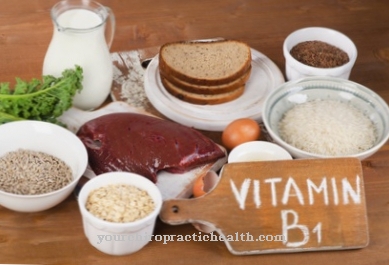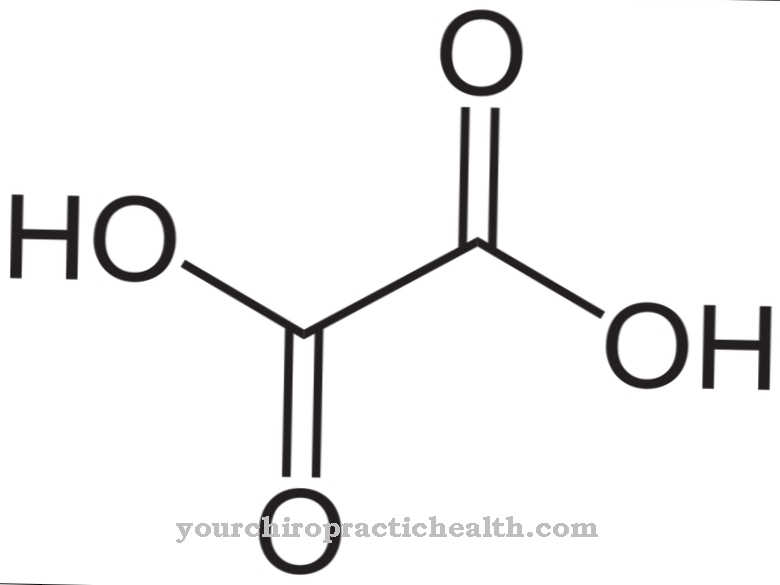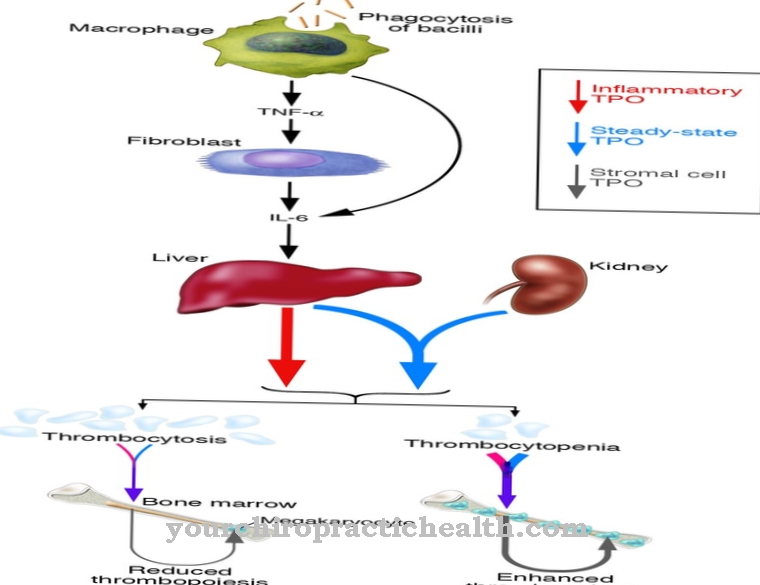At a Progestin it is a so-called luteal hormone. In addition to the estrogens, progestins belong to the female sex hormones, they are so-called steroid hormones.
What is progestin
Progestins are so-called steroids, the basic structure of which is Pregnan. Progesterone, pregnanediol and pregnenolone are the most important representatives of the progestins.
The natural progestin is a luteal hormone that is produced by the female body. There are also synthetic gestagens, which are also known as progestins or progestins.
Progestin is a kind of chemical derivative of the body's own hormone progesterone, which is responsible for regulating ovulation and preparing the lining of the uterus for an egg to implant.
Medical & health functions, tasks & meanings
Progestins are usually used to prevent pregnancy. As a rule, they are used here in combination with an estrogen. These include, for example, dienogest, lynestrenol and norethisterone.
Progestagens can also be used on their own to prevent pregnancy. However, the individual substances allow only a slight control of the monthly cycle and are therefore not as safe as the combination with estrogens. Progestagens that can be used alone include desogestrel and levonorgestrel. Furthermore, medroxyprogesterone acetate and etonogestrel belong to the progestogens that can be used alone. Desogestrel and levornogestrel are often used as minipills. The minipill reduces the hormonal burden on women, so it is especially recommended for breastfeeding mothers.
The effect of this mini pill is generally short-lived, which is why taking it every day at the same time as possible is particularly important. Medroxyprogesterone is given in the form of a depot syringe. This is injected into the muscles, where it forms a depot from which the active ingredient is released into the blood over a period of several weeks or even months. Implants with etonogestrel and intrauterine devices with levornogestrel are also suitable for long-term contraception. Levornogestrel is known in high-dose form as the so-called “morning-after pill”, which can be used to prevent pregnancy.
However, one does not speak of a contraceptive, but rather of a kind of emergency medication, which consists of two tablets that must be taken either at the same time or 12 hours apart. The intake must be taken within 72 hours, better still within 12 to 24 hours, after sexual intercourse, so that an effect is achieved.
effect
The mode of action of chemical progestins is modeled on that of the natural progesterone. In addition to estrogens, progesterone is one of the female sex hormones. It is produced in the ovaries in rhythmically changing amounts, with the effects of estrogens and progesterone interlocking. The uterine lining grows due to the estrogens, and the progesterone then prepares it to embed the fertilized egg cell. As soon as an egg cell has been formed and released in the ovaries by the action of the estrogen, the progesterone helps to prevent further ovulation and further egg cell maturation and thus a twin pregnancy.
After a successful fertilization, the progesterone takes over the task of solidifying the vaginal mucus and the cervical mucus so that no more sperm can reach the uterus. It also ensures that the pregnancy is maintained after implantation. If neither fertilization nor pregnancy has occurred, the progesterone level drops again. So-called withdrawal bleeding occurs, during which the built-up tissue of the uterine lining is rejected.
The chemical progestins are usually used to prevent pregnancy, so the mode of action is somewhat different here. In principle, progestins mimic the effects of progesterone. They prevent the egg cell from maturing, they solidify the cervical mucus and the vaginal mucus and, in some cases, also suppress ovulation.
Ingestion
Progestogens that are taken as a single agent are used continuously. There is no break in taking one week and therefore there is no regular withdrawal bleeding.
The usual bleeding pattern changes - either the bleeding is irregular or disappears completely. In almost every woman, bleeding will decrease after a few months of use and will only occur very rarely. If gestagens are used as the morning-after pill, they inhibit ovulation and thus the fertilization of a mature egg cell.
They also prevent a fertilized egg from implanting in the uterus. However, if the egg has already established itself, the morning-after pill is not suitable for an abortion.
Illnesses, ailments & disorders
Become Progestins Taken in combination with estrogens, they have a cancer-inhibiting effect on menopausal symptoms. Since estrogens promote the build-up of the uterine lining, which can lead to the development of cancer cells, progestins are added so that a withdrawal bleeding occurs, during which the uterine lining is shed again.
If gestagens are consistently combined, this usually leads to an underdeveloped uterine lining in the long term and thus to a low risk of cancer. If a woman suffers from endometriosis, progestins can help break down the lining of the uterus. This can prevent symptoms caused by inflammation and bleeding. Progestogens can generally fulfill the tasks of natural progesterone.
Due to a progesterone deficiency, menstrual disorders often occur, which can then often lead to an unwanted termination of pregnancy. Here, progestins are used to compensate for the lack of progesterone. There is also the assumption that progestins can act against cancer cells that produce estrogen receptors. However, the effect on cancer cell growth is not yet fully understood.



























